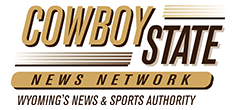
A new report released by the University of Wyoming’s Ruckelshaus Institute analyzes the challenges, the implementation and the durability of a broad array of state and local policies designed to conserve wildlife corridors and enhance habitat connectivity.
In the report, titled “An Analysis of State and Local Policies to Maintain Ecological Connectivity,” UW researchers examined 37 state and 10 local policies and found that, while many jurisdictions are taking steps to address wildlife connectivity, significant gaps remain with funding implementation. The report also highlights the critical role that municipalities and county governments can play in conserving habitat through the development of connectivity policies.
“While state and local governments have begun adopting policies to conserve wildlife migration routes, we felt it was important to analyze the diversity of approaches pursued and the impact those policies are having on the ground,” says Drew Bennett, one of the report’s lead researchers and the Whitney MacMillan Professor of Practice of Private Lands Stewardship in UW’s Haub School of Environment and Natural Resources. “We hope this report will provide insights for both practitioners and policymakers and promote learning across jurisdictions and administrative boundaries.”
The study revealed a wide spectrum of policy approaches across jurisdictions, ranging from formal state-level legislation to local ordinances, administrative actions, executive orders and intergovernmental agreements.
Key findings indicated that the most prevalent implementation mechanisms were mandates for developing connectivity plans and constructing wildlife roadway crossings. However, a significant challenge emerged in policy execution — only five jurisdictions allocated specific funding for these initiatives, potentially limiting their effectiveness.
“Policies at all levels of government are a critical means of stemming habitat loss and conserving connectivity and often work in an integrated fashion with federal and other local policies,” says Associate Professor Temple Stoellinger, another contributor to the report and Wyoming Excellence Chair in the Haub School. “As these policies gain traction and become more widespread, the challenge for state and local governments will be to identify and leverage funding sources that align best with their specific connectivity conservation goals and local contexts.”
A crucial insight from the report highlights the pivotal role of municipalities and county governments in habitat conservation through connectivity policies. The research suggests that these local entities often possess more authority and capacity to address connectivity concerns than they may realize, particularly through their zoning, transportation and land use planning powers.
“This research provides a broad overview of the current landscape of connectivity policies at the state and local levels,” Bennett adds. “It offers a valuable resource for policymakers and conservationists looking to develop or improve their own connectivity initiatives by seeing what has been done in other jurisdictions.”
The study’s authors will present findings and key takeaways in a free public webinar from noon-1 p.m. Wednesday, Oct. 2. To register, go here.
